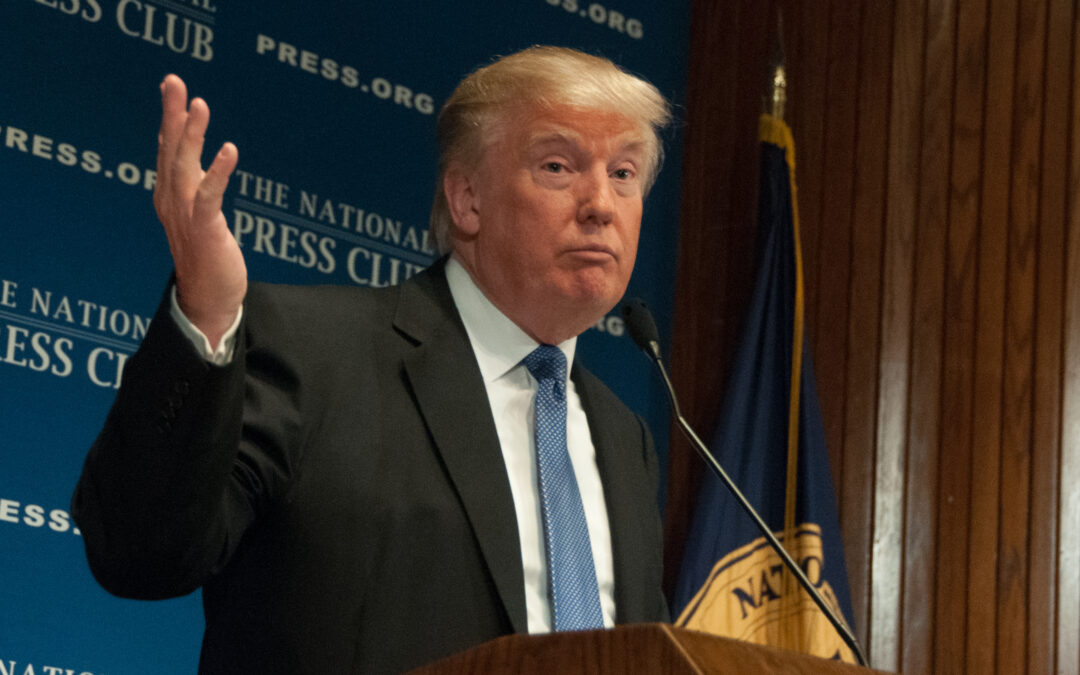Last week, President Trump issued a controversial buyout offer to over 2 million government employees.
Many were surprised by this announcement, but as a labor market specialist, I can tell you this was a brilliant first move for the man whose infamous catch phrase was “you’re fired.”
Here’s why:
Video Transcript:
Hello, welcome to Moneyball Economics. I’m Andrew Zalin and this is the ZatCave…
Hey, we’ve been getting a lot of new subscribers and I want to make sure that I really appreciate you joining Moneyball Economics and whether you’re a new subscriber, an existing subscriber.
The bottom line is I’d like to hear your thoughts. I’d like to get some engagement from you. Tell me what’s working. Tell me what’s on top of your mind. Send me an email. You can see my email address down below (Moneyball@MoneyandMarkets.com).
Now, let’s get going.
As I put on my hat for Mr. Labor, we’ve had some interesting things coming out in the labor market, specifically from President Trump. Lately, he’s been on a tirade against government workers and he’s putting money where his mouth is.
So what’s going on? We got 3 million federal government employees.
Are they about to rush into the private sector?
Are we going to see a lot more competition for jobs? Not exactly.
In fact, let’s take a step back and understand where President Trump is coming from and where he wants to go.
Alright, first off, you’ve got 3 million government workers and you have to look at what the opportunity is here. Politically speaking, Trump loses nothing by going after federal government workers.
Really, it’s hard to find someone who really supports government workers in general, so it’s an easy target. Having said that, there’s an opportunity here. Remember, Trump is trying to do one thing that he keeps repeating. He wants to cut government spending.
wants to stop treating the taxpayer as an ATM machine and instead start returning money into their pockets, okay? Right now, 3 million workers, but only 6% of them are working in the office. That means almost all of them are working from home, and Trump started there by saying he wants everybody to report into the office.
So what’s the ulterior opportunity here?
If you have everybody, if you have all 3 million people reporting into the office, that’s going to be crazy, especially if you’re in Washington dc. But what’s really going on here is it’s not just having them in the office, it’s that he suspects — possibly rightly so — that a great many of these federal government workers are actually not working, or they might be working elsewhere, or example by being able to work from home, maybe there really is no work.
You’re just clocking in and then you’re going off and doing your own thing. Or maybe there are workers who have side gigs, yes, during the day they’re partially working for the federal government. But then the rest of the day they’ve got a second job, for example, and it’s a lot harder to hide this kind of activity if you’re sitting in the office surrounded by office mates.
So this is an attempt, I believe, by Trump to try to start squeezing out people who really don’t have that job or that job may not even exist.
What do I mean by that? Well, if you ever watch The Sopranos, there’s a great episode where Tony’s got to work with the union guys and the union guys are doling out no-show jobs. What that means is it’s a job with a title and a paycheck, but the person who has that job doesn’t have to show up. That happens a lot in government.
In fact, Kamala Harris had something like that, not exactly a no-show job, but she was one person, multiple paychecks while she was in San Francisco. She was, for example, on the unemployment insurance board. At the same time, she was also on the California Medical Assistant Board and so on and so forth. One person, multiple jobs, multiple paychecks.
In some ways, forcing people to come into the office is a way to start squeezing out this excess.
Now, a lot of these jobs exist, by the way, for political reasons. What better way to buy political support from your friends and allies than by throwing jobs to their kids, their cousins, and so on? It’s a great way to funnel money to your advocates, shall we say. Alright, a second thing. Beyond having workers show up to work, Trump is going after their paycheck, and this is a really smart thing that he’s doing really smart.
Remember, government workers are union workers, which means it’s almost impossible to fire them, and there are incentives thrown their way to keep them working. For example, if you’re a government worker who was hired before 2013, you pay almost nothing into the pension plan. You pay about 0.8% of your salary, and that guarantees you a pension after you’ve worked five years.
Very sweet job.
And that might be the reason why almost half of the federal government workers almost half are older than 45 years of age. That’s right. We have a lot of senior citizens working for the federal government because you can’t fire ’em and they don’t want to leave. They’re getting this great pension on the horizon, and let’s face it, they also get guaranteed raises.
All in all, it’s a sweetheart job for 3 million people. But that’s a problem.
If you’ve got people who’ve been in that job for far too long, it may be time to get rid of them simply because that job may not be needed anymore.
Maybe we could just automate that task, but why bother? Since we’ve got to keep Joe Smith on board or by having someone up at the top, they’re a lot more expensive than someone new.
When I say up at the top, I mean of the seniority chart, someone who’s been around 30, 40 years doing a simple task, you could probably find someone able to do that for half or less of the salary and also have new ideas in fresh blood.
We’re not seeing that when half of your team is approaching retirement age or has gone beyond it. Well, you’re keeping out young blood. So that’s a problem at the federal productivity level.
Let’s talk about what Trump is really offering though. He’s offering eight months. Let me do the number for you because this is where it gets really interesting. Eight months. That’s 67% of the salary that you have today, alright?
Under the pension plan today, you’re 55 years, you qualify for the pension plan. What can you expect?
Well, it really is driven by how many years you’ve been at the federal government. Let’s use one worker say at the very bottom, they’ve been there for 10 years.
Let’s face it, if you’re 55 years or over, you’ve probably been there 10 years. Let’s just use that in any case as our example. So if you’ve been there for 10 years, you’re going to get 10% of your average highest salary that you’ve been there for three years.
Okay?
So basically you’re going to get, right now, if you’ve been there 10 years, you get 10% of your salary as a pension every year going forward. What Trump is offering you top of that 67% of your yearly salary. So if you’re getting 10% per year, if someone offers you 67% in addition, they’re offering you six to seven years of extra pension payout.
That is very sweet. And maybe we go up to the extreme. Okay? Let’s say you join the federal government in your twenties and you’re now in five or so. You’ve been working for the federal government 30 years, same kind of situation.
Now, the pension equivalent is less two to three years, but it’s still super interesting because let’s face it, in the private sector, you don’t get two years, you don’t get six years, you get a few months of severance and you don’t get a pension plan.
So Trump is looking at this as a big savings.
And guess what? Okay, let’s actually bring these numbers home. You see this almost 5% or 150,000 government workers are 65 years or older, okay? They’re already thinking pensioning out. Now you offer ’em a couple more years.
That’s 150,000 people.
Let’s say over a hundred thousand dollars each wages, you’re saving $150 million per year right off the bat. And maybe more for those who are over a hundred thousand. Now let’s go up to the next bracket.
15% of federal government workers are 60 years of age or older. So again, you’ve got this massive, massive number of people who are at retirement age and are already considering it. They just need that incentive.
The incentive is a win-win. Trump is telling you, you get a couple more years of pension payout, and in the same time, the US government is saving hundreds of millions of dollars and potentially a billion dollars per year just for accelerating you out the door.
This is a brilliant plan. He may sweeten the pop, but this is brilliant. Give the federal government workers, we are so top heavy, it’s not funny. Get rid of them. Get some fresh blood that’s cheaper, likely more productive.
And by the way, this isn’t going to be limited to the federal government. You can expect this kind of approach to start opening up eyes at the local government level where there’s even more cronyism going on.
You can expect taxpayers to start saying, wait a second, maybe we can also save money. So instead of our taxes going up, we get some tax relief and get better services. At the same time. This is going to be a trend. We are going to see fewer government workers while at the same time not seeing a drop in services and possibly better.
This is a big stepping stone and only one of the many that are going to be thrown out by Trump as he tries to change the structure of the US economy.
Stay tuned folks. We’re in it to win it, Zatlin out!

Andrew Zatlin
Editor, Superforecast Trader





